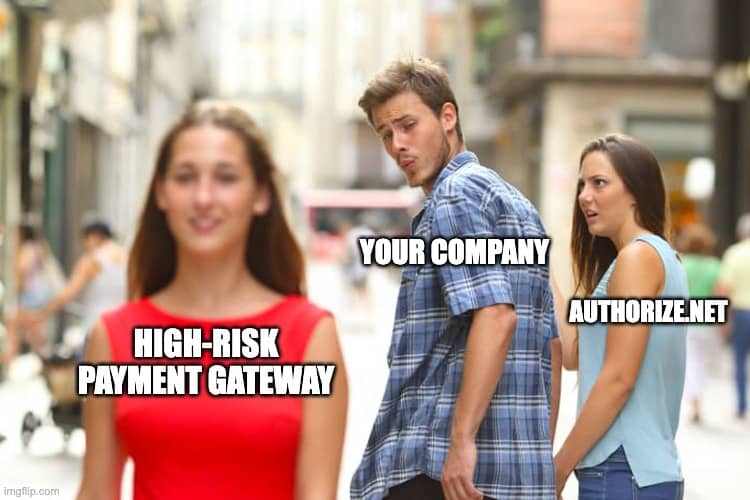EBT Machine Set-Up

Electronic benefits transfer (EBT) cards allow recipients of the Supplemental Nutrition Assistance Program (SNAP) to buy food and related items. The program is provided through the United States Department of Agriculture (USDA), Food and Nutrition Services (FNS) and Temporary Assistance for Needy Families (TANF).
But do you know how to set up an EBT machine? Or how to get an EBT machine for your business? How do you know if the EBT terminal has the right EBT software? Accepting EBT and SNAP benefits at your store means you need a suitable point-of-sale (POS) for the job.
First, let’s look at the history of the food stamp benefits program.
How did the SNAP Program Start?
The government issued the first-ever food stamps (the name of this program has changed many times since its inception) in May 1939 to help families still suffering from the effects of the Great Depression. At that time, community members had to buy their food stamps. The individual received $1.50 in food stamps for every dollar, increasing their purchasing power and making their money go further.
By World War II began, the nation was in a better place. Unemployment was down, and crops were up, so President Roosevelt discontinued the food stamp program. It wouldn’t be until 1960, when President John F. Kennedy visited the rural communities of Appalachia and other areas in West Virginia, that the true nature and scope of the nation’s poverty would be fully understood.
One of Kennedy’s first actions upon becoming President in 1961 was reinstate the food stamp program. Under Kennedy, the program changed little from the original—participants were still required to purchase their family’s food stamps. The program continued to change the presidencies of Lyndon B. Johnson and Richard Nixon. It wouldn’t be until 1977, under the guidance of Senators Bob Dole (R) and George McGovern (D), that program participants were no longer required to purchase their food stamp assistance.
In 1990, the program began testing the first EBT cards and EBT terminals. By 2004, the old paper food stamp booklets were entirely phased out, and all benefits were deposited on participants’ EBT cards. In 2008, the benefits program got a facelift and a name change, becoming SNAP.
In 2021, 41.5 million people received SNAP benefits, which amounted to over 2.5 billion EBT card transactions. Becoming a SNAP retailer is the first step to welcoming new customers and growing your business. After the Food and Nutrition Services program approves you, you’ll receive a SNAP permit with an FNS number. Then, you’ll need to partner with a reliable EBT merchant services provider that can offer the EBT machine required for processing EBT and SNAP transactions.
Did you know? Zenti provides EBT merchant services, offers compatible EBTterminals, and can show you how to set up an EBT machine. If you already have your FNS number, contact Zenti for your EBT point-of-sale machine so you can start accepting EBT payments today.
EBT Payment Processing With an EBT Merchant Services Account
The electronic benefits transfer system allows state welfare departments to issue EBT and SNAP benefits via a magnetically encoded payment card—the type of card that must be swiped.
EBT cards are similar to debit cards in that they are assigned to a specific individual and require a personal identification number (PIN) to access funds. One key difference between EBT cards and debit cards is that individuals can add money to a debit card, either at their bank, via ACH payment, reloading options at participating stores, or online by transferring funds from one bank account into another. For EBT cards, however, only the benefit-issuing agency has the authority to add funds.
Processing an EBT card payment is the same as processing debit card payments. You ring up the sale (being careful, no disallowed items are included for SNAP purchases), the EBT cardholder swipes the card, inputs their PIN, and the funds are taken from their card and put into a holding account for your business. Within a few business days, you’ll see the proceeds of that sale in your business’s bank account. This functions the same whether the purchase uses SNAP or cash benefits.
Opening your doors to accepting EBT payments allows you to grow your business while providing EBT customers access to food and other products they might not find elsewhere.
What is the Impact of Recent Increases on the SNAP Program?
In August 2021, the USDA reevaluated the program that calculates SNAP benefits. The reevaluation helped the FNS increase SNAP benefit amounts in October 2021. These higher benefit amounts mean the average family receives 25% more SNAP benefits than before the pandemic began. SNAP benefits increases averaged $36 per person and will not return to previous benefit limits even after the pandemic is over.
What Does This Mean for Stores With an FNS Number?
This bump in monthly SNAP benefits means SNAP retailers could see new opportunities for growth, such as:
- Increased brand recognition
- Increased foot traffic
- Increased sales
Not only can you boost your business, but you can also provide a much-needed service to your local community.
How Does a Business Qualify as a SNAP Retailer?
The USDA FNS application asks for information about your business. Approval to become a SNAP retailer requires your business to meet specific criteria. Your business must meet at least one of these two requirements:
- You must offer staple foods.
- Your gross revenue from the sale of staple foods must be at least 51% of your revenue.
Now, what’s meant by “staple foods?” And how is this qualification determined?
The staple food comprises—or should comprise—the majority of an individual’s diet. These foods are typically purchased, taken home, and consumed as part of a well-rounded meal. In most cases, prepackaged foods (except for items such as breakfast cereal) aren’t included in the definition. Meals or items prepared by someone else or already cooked, such as a rotisserie chicken at the grocery store deli counter, also don’t qualify in most cases.
To qualify under the first requirement, you must continuously stock at least three varieties of three different staple foods. Staple foods include:
- Vegetables and fruits
- Eggs, poultry, and fish
- Bread and cereals
- Dairy
- Meats
Two categories must also offer one perishable type at a minimum. So, for instance, one of your two categories is dairy—powdered milk would count as non-perishable, while a gallon of whole milk would be considered perishable. A large grocery store would meet this requirement in most cases.
To qualify under the second requirement, more than 50% of your store’s gross sales must come from selling foods in the categories above. A butcher shop typically qualifies because more than 50% of sales are within a staple category. A bakery, on the other hand, might not be granted an FNS number for EBT because, while they’re in the business of selling food, bakery items don’t qualify as staple foods in most cases.
Finally, there are certain items participants cannot purchase using an EBT card or SNAP payments, and other rules you must follow, such as not providing cash back with an EBT purchase, not allowing non-food items with SNAP benefits, and making sure SNAP purchases are only for eligible food items. You must be aware of these common mistakes SNAP retailers make.
Becoming a SNAP retailer? Zenti offers a free EBT point-of-sale terminal, if needed, with every EBT merchant account. Contact us to learn more.
How Do I Start Accepting EBT SNAP?
EBT cards are part of the Quest payment network and must be processed through a specific terminal type. Those terminals must be programmed with a retailer’s information, precisely their FNS number from the UDSA and their EBT merchant service provider’s special keys. You must register and apply with the USDA’s FNS program and receive approval for your SNAP license before accepting your first EBT card payment. In addition to the above requirements of staple food items, you must meet a minimum 50% staple food sales revenue mark. If you own a chain of ten or more qualifying grocery stores, you cannot apply for your FNS number online. Instead, a representative from the FNS will work directly with you to get you approved to accept EBT cards.
Farmer’s markets can even qualify for SNAP benefits payment acceptance.
You can begin accepting EBT card payments once you’ve:
- Registered your store with the USDA to establish your identity
- Activated your USDA FNS account online
- I filled out the 15-minute application on the FNS website to accept EBT and SNAP payments.
- Uploaded your photo ID, social security cards for all business partners and owners, your business license, and your bank account statements
- Received an approval notification from the FNS and your physical SNAP permit card with your FNS number
You must also provide the FNS with contact information for your current merchant services account provider.
What do I Need to set up EBT Merchant Services?
Once you hear back from Food and Nutrition Services—be aware that this can take up to 45 days—it’s time to set up EBT payment processing with an EBT merchant services provider. In addition to the EBT merchant account, you’ll also need an EBT terminal programmed with EBT software and a dedicated PIN pad for customers to enter their EBT card’s PIN.
Did you know? Many of today’s merchant account services offer to process EBT payments, but not all merchant account providers are created equal. Only Zenti provides:
- The most updated EBT terminals.
- EBT software.
- Free processing.
- Best-in-class customer service for a low monthly fee.
How Do I Connect my Equipment to the EBT System?
Do you know how to get an EBT machine for your business? More importantly, do you know how to set up an EBT machine? Once you have your SNAP license with the FNS number for EBT, call your EBT equipment provider for an EBT terminal with the right EBT software. The EBT equipment provider then
- Provides the right EBT equipment and shows you how to set up an EBT machine.
Or, if it’s determined your current equipment is compatible with EBT payment processing
- Programs your current point-of-sale machine with the merchant account provider’s digital encryption keys.
Regardless of the route you take, your EBT merchant service provider needs your FNS number for SNAP retailers to complete your EBT merchant account setup.
Where can I get EBT Processing?
You already have a merchant account provider if your store accepts credit and debit card payments. While most of today’s merchant account providers support EBT payment processing, there’s always the chance yours isn’t also an EBT equipment provider. In this case, you have two options:
- You can obtain an EBT merchant service account as a stand-alone product from a merchant account provider specializing in EBT transactions while maintaining your current merchant account for debit cards and credit cards.
- You can migrate all your card processing needs and switch your merchant services to an account that can bundle traditional card payments with your new EBT card processing merchant account.
How Zenti can Help
Do you need help finding reliable EBT merchant account services? Zenti’s knowledgeable EBT merchant account representatives are ready to answer any questions and help you get on the road to processing EBT card and SNAP benefit payments for your community. Reach out to get started.
Read Next

Find out whether Authorize.Net works for high risk merchants, what restrictions you might face and how to get approved.

Get expert advice on selling CBD products on Shopify, including compliance tips and setting up secure payment options.

Find out why Square may deactivate merchant accounts and steps to resolve issues and maintain uninterrupted payment services.
Need a High-Risk Merchant Account?
Disruption-free payment processing at the best price for your situation, guaranteed.
Get Free Guidance Now!